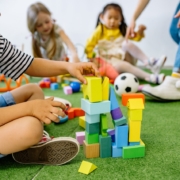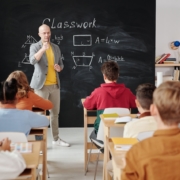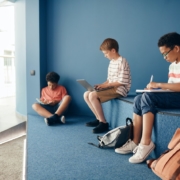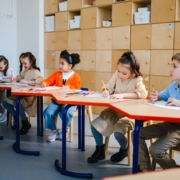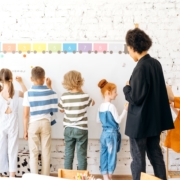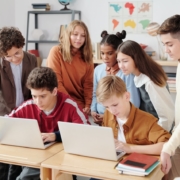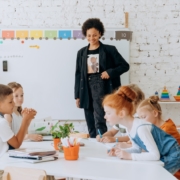Curriculum development and implementation
Curriculum development and implementation are crucial components of the educational process, and they involve the design, creation, and delivery of educational content and experiences for students. The curriculum is the foundation of a school’s educational program, and it defines the goals and objectives of the educational experience for students. Here are some topics related to curriculum development and implementation:
Table of content
- Goals and objectives of education
- Curriculum development and Alignment with state and national standards
- Collaborative approach to curriculum development
- Effective instructional strategies and approaches in school
- Importance of data and assessment in curriculum development and implementation
- The role of parents and students in curriculum development and implementation in schools
- Best practices in education research in schools
- The impact of cultural and linguistic diversity on curriculum development and implementation in schools
- Addressing the needs of students with special needs and disabilities
- The role of continuous improvement in curriculum development and implementation in schools
- The importance of interdisciplinary and project-based learning in the school curriculum.
Goals and objectives of education
Education is a critical component of human development, and its goals and objectives are central to its success. The goals and objectives of education help to define the purpose and direction of the educational experience for students. They provide a framework for curriculum development, instruction, and assessment, and they guide the design and delivery of educational programs and experiences.
- Developing Knowledge and Skills: One of the primary goals of education is to develop knowledge and skills in students. This includes the acquisition of core academic skills, such as reading, writing, and mathematics, as well as the development of critical thinking, problem-solving, and communication skills. These skills are essential for success in college, career, and life.
- Preparing for Career and Life: Another important goal of education is to prepare students for success in their future careers and personal lives. This includes the development of practical skills, such as financial literacy, leadership, and digital literacy, as well as the promotion of healthy lifestyle habits, such as physical fitness, nutrition, and stress management.
- Promoting Social and Emotional Development: In addition to developing knowledge and skills, education also plays an important role in promoting social and emotional development in students. This includes the development of self-awareness, empathy, and healthy relationships, as well as the promotion of positive attitudes and values, such as respect, responsibility, and integrity.
- Encouraging Creative and Intellectual Development: Another important goal of education is to encourage creative and intellectual development in students. This includes the promotion of curiosity, imagination, and creativity, as well as the development of higher-level thinking skills, such as analysis, synthesis, and evaluation.
- Fostering Cultural Awareness and Diversity: Education also has the goal of fostering cultural awareness and diversity in students. This includes the promotion of understanding and appreciation of different cultures, as well as the development of intercultural communication and collaboration skills.
- Supporting Personal Growth and Development: Finally, education has the goal of supporting personal growth and development in students. This includes the promotion of self-reflection, self-awareness, and self-esteem, as well as the development of resilience, persistence, and independence.
These goals and objectives are interrelated and interdependent, and they provide a comprehensive framework for the educational experience of students. They also reflect the changing needs and expectations of society, and they should be reviewed and updated regularly to ensure that they remain relevant and effective.
In order to achieve these goals and objectives, it is important for schools and educators to adopt a holistic and student-centered approach to education. This involves creating a supportive and inclusive learning environment, using engaging and effective instructional strategies, and providing opportunities for students to engage in real-world experiences and projects.
In conclusion, the goals and objectives of education are critical to its success, and they provide a framework for curriculum development, instruction, and assessment. They include the development of knowledge and skills, preparation for career and life, promotion of social and emotional development, encouragement of creative and intellectual development, fostering of cultural awareness and diversity, and support of personal growth and development. By prioritizing these goals and objectives, schools and educators can ensure that students receive a high-quality education that prepares them for success in college, career, and life.
Curriculum development and Alignment with state and national standards
Education is a critical component of human development, and its goals and objectives are central to its success. The goals and objectives of education help to define the purpose and direction of the educational experience for students. They provide a framework for curriculum development, instruction, and assessment, and they guide the design and delivery of educational programs and experiences.
- Developing Knowledge and Skills: One of the primary goals of education is to develop knowledge and skills in students. This includes the acquisition of core academic skills, such as reading, writing, and mathematics, as well as the development of critical thinking, problem-solving, and communication skills. These skills are essential for success in college, career, and life.
- Preparing for Career and Life: Another important goal of education is to prepare students for success in their future careers and personal lives. This includes the development of practical skills, such as financial literacy, leadership, and digital literacy, as well as the promotion of healthy lifestyle habits, such as physical fitness, nutrition, and stress management.
- Promoting Social and Emotional Development: In addition to developing knowledge and skills, education also plays an important role in promoting social and emotional development in students. This includes the development of self-awareness, empathy, and healthy relationships, as well as the promotion of positive attitudes and values, such as respect, responsibility, and integrity.
- Encouraging Creative and Intellectual Development: Another important goal of education is to encourage creative and intellectual development in students. This includes the promotion of curiosity, imagination, and creativity, as well as the development of higher-level thinking skills, such as analysis, synthesis, and evaluation.
- Fostering Cultural Awareness and Diversity: Education also has the goal of fostering cultural awareness and diversity in students. This includes the promotion of understanding and appreciation of different cultures, as well as the development of intercultural communication and collaboration skills.
- Supporting Personal Growth and Development: Finally, education has the goal of supporting personal growth and development in students. This includes the promotion of self-reflection, self-awareness, and self-esteem, as well as the development of resilience, persistence, and independence.
These goals and objectives are interrelated and interdependent, and they provide a comprehensive framework for the educational experience of students. They also reflect the changing needs and expectations of society, and they should be reviewed and updated regularly to ensure that they remain relevant and effective.
In order to achieve these goals and objectives, it is important for schools and educators to adopt a holistic and student-centered approach to education. This involves creating a supportive and inclusive learning environment, using engaging and effective instructional strategies, and providing opportunities for students to engage in real-world experiences and projects.
In conclusion, the goals and objectives of education are critical to its success, and they provide a framework for curriculum development, instruction, and assessment. They include the development of knowledge and skills, preparation for career and life, promotion of social and emotional development, encouragement of creative and intellectual development, fostering of cultural awareness and diversity, and support of personal growth and development. By prioritizing these goals and objectives, schools and educators can ensure that students receive a high-quality education that prepares them for success in college, career, and life.
Collaborative approach to curriculum development
Collaborative Approach to Curriculum Development refers to a method of designing and creating educational programs in which multiple stakeholders participate in the decision-making process. The aim is to produce a well-rounded and inclusive curriculum that reflects the diverse needs and perspectives of different groups in society.
A collaborative approach to curriculum development is based on the belief that education is a shared responsibility and that everyone involved in the education system should have a voice in shaping the curriculum. This approach recognizes that the curriculum should not be developed in isolation, but rather through a process of consultation and dialogue with key stakeholders such as teachers, students, parents, and community members.
The benefits of a collaborative approach to curriculum development are many. Firstly, it allows for the inclusion of a wider range of perspectives and experiences, leading to a curriculum that is more inclusive and reflective of the diverse needs of the community. This is particularly important in today’s increasingly diverse and globalized world where the curriculum must be responsive to the needs of all students.
Additionally, a collaborative approach leads to greater buy-in from teachers, students, and other stakeholders, as they are more likely to support and embrace a curriculum that they have helped to shape. This, in turn, can lead to better implementation and greater success in the classroom.
Furthermore, a collaborative approach can help to ensure that the curriculum is relevant and up-to-date, reflecting the latest developments and trends in education. It allows for ongoing refinement and improvement of the curriculum, ensuring that it remains current and responsive to changing needs and priorities.
The process of a collaborative approach to curriculum development typically begins with the identification of stakeholders and the establishment of a steering committee or working group. This group is responsible for overseeing the development process and ensuring that all stakeholders have the opportunity to contribute their ideas and perspectives.
Next, the group conducts a needs assessment to identify the goals and objectives of the curriculum and to determine the content and skills that should be covered. This may involve conducting surveys, focus groups, and other forms of consultation with stakeholders to gather their input and feedback.
Once the needs assessment has been completed, the steering committee or working group begins the process of designing the curriculum. This may involve creating a framework or outline of the content that should be covered, and then working with subject-area experts to develop the specific content and materials. Throughout this process, it is important to involve teachers, students, and other stakeholders in the development of the curriculum to ensure that their perspectives and needs are taken into account.
The final step in the collaborative approach to curriculum development is the implementation and evaluation of the curriculum. This may involve piloting the curriculum in a limited number of classrooms or schools to gather feedback and make any necessary adjustments before rolling it out more broadly.
In conclusion, a collaborative approach to curriculum development is a more inclusive, responsive, and effective method of creating educational programs. It recognizes that education is a shared responsibility and that all stakeholders should have a voice in shaping the curriculum. By involving teachers, students, and other stakeholders in the development process, a collaborative approach leads to a curriculum that is more reflective of the needs and perspectives of the community, and that is more likely to be successful in the classroom.
Effective instructional strategies and approaches in school
Effective instructional strategies and approaches are essential for effective teaching and learning in schools. These strategies are designed to help teachers engage and motivate students, foster critical thinking skills, and create a positive learning environment. In this essay, we will explore some of the most effective instructional strategies and approaches used in schools.
- Differentiated Instruction: This approach recognizes that all students have unique learning needs and styles and seeks to address these differences in the classroom. Teachers using this approach adjust their instruction to meet the needs of each student, providing a range of activities, assignments, and learning experiences that cater to diverse learning styles. For example, a teacher may provide visual aids for visual learners, hands-on activities for kinesthetic learners, and group discussions for auditory learners.
- Project-Based Learning: This approach involves students working on real-world projects that require them to apply their knowledge and skills in a meaningful way. Projects often involve collaboration, critical thinking, and problem-solving, and allow students to learn by doing. This approach has been shown to increase student engagement and motivation and promote deeper learning.
- Inquiry-Based Learning: This approach focuses on student-centered learning and encourages students to ask questions, seek answers, and discover new information on their own. Teachers using this approach provide guidance and support, but allow students to take the lead in their learning. Inquiry-based learning can help students develop critical thinking and problem-solving skills and promote a love of learning.
- Active Learning: This approach involves students actively participating in the learning process through hands-on activities, discussions, and group work. Active learning has been shown to improve student engagement and motivation, and increase student retention of information. Teachers can incorporate active learning into their instruction by using games, simulations, and other interactive activities.
- Collaborative Learning: This approach involves students working together in small groups to complete a task or project. Collaborative learning encourages students to share ideas, discuss and analyze information, and develop social skills. It has been shown to increase student motivation and engagement and promote deeper learning.
- Blended Learning: This approach involves combining traditional face-to-face instruction with online learning. This approach provides students with more flexibility and control over their learning, allowing them to work at their own pace and on their own schedule. Blended learning can also help teachers personalize instruction and provide students with a wider range of resources and materials.
- Game-Based Learning: This approach uses games and simulations to engage students in learning. Games can provide students with a fun and engaging way to learn and can help to develop critical thinking and problem-solving skills. Teachers can use game-based learning to teach a wide range of subjects, from math and science to history and social studies.
- Inquiry-Based Science: This approach focuses on student-led investigation and discovery in the sciences. Teachers using this approach provide students with a real-world problem or question to investigate, and then guide students through the process of conducting experiments and analyzing data. This approach can help students develop critical thinking and problem-solving skills, and promote a love of science.
- Technology-Enhanced Learning: This approach uses technology to support and enhance learning. Technology can be used to provide students with access to a wider range of resources and materials, to personalize instruction, and to support collaboration and communication. Teachers can use a variety of tools, such as digital whiteboards, learning management systems, and online simulations, to enhance their instruction.
In conclusion, effective instructional strategies and approaches are critical for effective teaching and learning in schools. Teachers can choose from a wide range of strategies and approaches to suit the needs and learning styles of their students. By using effective instructional
Importance of data and assessment in curriculum development and implementation
Data and assessment play a crucial role in curriculum development and implementation, as they provide valuable information that can be used to improve educational programs. In this essay, we will explore the importance of data and assessment in the curriculum development process.
- Identifying Student Needs: Data and assessment provide information about student strengths and weaknesses, allowing educators to identify areas where students may be struggling and target those areas for improvement. For example, if assessment results show that a large number of students are struggling with a particular concept, this information can be used to inform the development of instructional materials and activities that better meet their needs.
- Monitoring Student Progress: Data and assessment are used to monitor student progress over time and to determine if students are meeting their learning goals. This information can be used to adjust instruction and to provide students with additional support and resources when needed.
- Evaluating Curriculum Effectiveness: Data and assessment can be used to evaluate the effectiveness of a curriculum by comparing student performance before and after implementation. This information can then be used to make improvements to the curriculum and to ensure that it is meeting the needs of students and achieving its intended goals.
- Promoting Evidence-Based Practice: Data and assessment provide evidence to support the development of best practices in education. This information can be used to inform decisions about the best instructional strategies and approaches to use, and to identify areas where additional research and development are needed.
- Supporting Data-Driven Decision-Making: Data and assessment provide a systematic and objective way to gather information and make informed decisions about curriculum development and implementation. This information can be used to prioritize resources and allocate funding, to make informed decisions about staffing, and to determine the best strategies for reaching educational goals.
- Fostering Student Engagement: Data and assessment can be used to promote student engagement by providing students with feedback on their progress and helping them set goals for their own learning. This information can be used to motivate students and encourage them to take an active role in their own learning.
- Improving Instructional Quality: Data and assessment can be used to improve the quality of instruction by providing teachers with feedback on their teaching practices. This information can be used to identify areas where teachers need additional training and support and to improve instructional materials and activities.
- Encouraging Professional Development: Data and assessment provide opportunities for teachers to reflect on their practice and to engage in ongoing professional development. This information can be used to support the growth and development of teachers and to ensure that they are using the most effective instructional strategies and approaches.
- Encouraging Collaboration: Data and assessment can be used to encourage collaboration among educators and to promote a shared understanding of educational goals and priorities. This information can be used to build consensus and to support the development of effective instructional strategies and practices.
In conclusion, data and assessment are essential tools for curriculum development and implementation. They provide valuable information that can be used to improve educational programs and to ensure that students are meeting their learning goals. By using data and assessment to guide curriculum development and implementation, educators can promote evidence-based practices, foster student engagement, and improve instructional quality.
The role of parents and students in curriculum development and implementation in schools
The role of parents and students in curriculum development and implementation is crucial to the success of educational programs. In this essay, we will explore the ways in which parents and students can be involved in the curriculum development process and the benefits of this involvement.
- Providing Input on Educational Priorities: Parents and students can provide valuable input on educational priorities by sharing their perspectives and experiences with educators. For example, parents and students may have valuable insights into the types of skills and knowledge that are important for students to have in the future, or they may have suggestions for the types of educational activities and programs that would be most beneficial to students.
- Promoting Student Engagement: By involving parents and students in the curriculum development process, educators can promote student engagement and motivation. When students are invested in their own education, they are more likely to be motivated to learn and to achieve their full potential.
- Improving Student Outcomes: Research has shown that involving parents and students in the curriculum development process can lead to improved student outcomes. This is because students are more likely to take ownership of their own learning when they are involved in the curriculum development process and when they have a say in what they are learning.
- Supporting Collaboration: Involving parents and students in curriculum development can help to build collaboration between educators, parents, and students. This can lead to a shared understanding of educational goals and priorities, and to a more unified approach to education.
- Encouraging Active Learning: By involving parents and students in the curriculum development process, educators can encourage active learning and critical thinking. This is because students are more likely to be engaged in their own learning when they are involved in the curriculum development process and when they have a say in what they are learning.
- Promoting Cultural Awareness: Parents and students can bring unique perspectives and cultural backgrounds to the curriculum development process, which can help to promote cultural awareness and understanding. This can be particularly important in diverse communities where students come from different cultural backgrounds and have different needs and experiences.
- Supporting Personalization: By involving parents and students in the curriculum development process, educators can support personalization of education and can ensure that educational programs meet the unique needs and interests of individual students.
- Improving Communication: Involving parents and students in the curriculum development process can improve communication between educators, parents, and students. This can lead to more effective partnerships and better educational outcomes for students.
It is important to note that involving parents and students in the curriculum development process requires careful planning and coordination. Educators should consider the following strategies for involving parents and students in the curriculum development process:
- Inviting Input: Educators can invite parents and students to provide input on educational priorities, instructional strategies, and program design.
- Creating Opportunities for Collaboration: Educators can create opportunities for collaboration between parents, students, and educators, such as through parent-teacher associations or student-led committees.
- Providing Training and Support: Educators should provide training and support for parents and students to ensure that they have the skills and knowledge needed to be effective participants in the curriculum development process.
- Encouraging Feedback: Educators should encourage parents and students to provide feedback on the curriculum development process, and to share their perspectives and experiences with educators.
In conclusion, the role of parents and students in curriculum development and implementation is important to the success of educational programs. By involving parents and students in the curriculum development process, educators can promote student engagement, improve student outcomes, and support collaboration and communication. To be effective, educators should plan and coordinate carefully and should provide training and support for parents and students to be effective
Best practices in education research in schools
Education research plays a crucial role in the continuous improvement of educational programs and practices in schools. By conducting research, educators can gain a deeper understanding of the factors that influence student learning, as well as the most effective instructional strategies and approaches. In this essay, we will explore some of the best practices in education research in schools.
- Collaboration: Collaboration between educators, researchers, and other stakeholders is key to the success of education research. By working together, researchers can tap into the expertise and experiences of educators and other stakeholders, and can ensure that research is relevant and useful to the education community.
- Evidence-Based Approaches: Education research should be based on rigorous and evidence-based methods. Researchers should use valid and reliable data sources and should employ rigorous statistical techniques to analyze the data. This helps to ensure that research findings are accurate and trustworthy.
- Relevance to Practice: Education research should be relevant to practice, and should provide practical recommendations for educators. Research should focus on real-world problems and should be designed to provide practical solutions that can be implemented in the classroom.
- Long-Term Focus: Education research should have a long-term focus, and should aim to build knowledge and understanding over time. Researchers should consider both short-term and long-term outcomes when conducting research, and should strive to understand the long-term impacts of educational programs and practices.
- Ethical Considerations: Education research should be conducted in accordance with ethical principles and standards. Researchers should obtain informed consent from participants and should ensure that data is collected and used in a manner that is consistent with ethical principles and standards.
- Dissemination of Results: The results of education research should be disseminated widely and made available to the education community. This can be done through publication in academic journals, presentation at conferences, and dissemination through other means such as websites, social media, and newsletters.
- Continuous Improvement: Education research should be seen as a continuous process of improvement, and should not be viewed as a one-time event. Researchers should continually strive to improve their methods and to build upon their understanding of what works in education.
- Engagement with Stakeholders: Education research should be designed to engage with stakeholders, including educators, students, and parents. Researchers should involve stakeholders in the research process, and should ensure that their perspectives and experiences are taken into account when conducting research.
To be effective, education research in schools should follow best practices such as collaboration, evidence-based approaches, relevance to practice, long-term focus, ethical considerations, dissemination of results, continuous improvement, and engagement with stakeholders. By following these best practices, education research can play a vital role in the continuous improvement of educational programs and practices, and in the support of student learning and success.
In conclusion, education research is a critical component of the continuous improvement of educational programs and practices in schools. By following best practices, such as collaboration, evidence-based approaches, relevance to practice, long-term focus, ethical considerations, dissemination of results, continuous improvement, and engagement with stakeholders, education research can provide valuable insights into the factors that influence student learning and the most effective instructional strategies and approaches. This can help educators to make informed decisions about educational programs and practices, and to support student learning and success.
The impact of cultural and linguistic diversity on curriculum development and implementation in schools
Cultural and linguistic diversity play a crucial role in shaping the curriculum development and implementation in schools. The curriculum is a reflection of the society in which it is developed, and it is essential to ensure that it is inclusive and equitable. The inclusion of diverse perspectives, cultures, and languages in the curriculum can have a positive impact on student learning, academic achievement, and overall educational experiences.
Cultural diversity refers to the differences in beliefs, values, traditions, and customs that exist between different groups of people. In a culturally diverse society, the curriculum must reflect the experiences and perspectives of all groups, including those who are often marginalized or underrepresented. This can be achieved by incorporating a variety of texts, materials, and pedagogical approaches that highlight different cultures and perspectives.
For example, in a history curriculum, it is important to include stories and perspectives from a variety of cultural groups, including indigenous peoples, people of color, and immigrant communities. This can help students understand the diverse experiences and contributions of different groups and broaden their understanding of history.
Linguistic diversity refers to the differences in language that exist between individuals and groups. In a linguistically diverse society, the curriculum must be designed to accommodate the needs of students who speak different languages or dialects. This can be achieved by incorporating multilingual approaches, such as teaching in both the dominant language and students’ home languages, or by providing resources and support for students to develop their language skills.
For example, in a language arts curriculum, it is important to provide students with a variety of texts and materials written in different languages or dialects, as well as opportunities to write and express themselves in their own language. This can help students develop a stronger sense of their linguistic identity and cultural heritage, and improve their overall language skills.
The impact of cultural and linguistic diversity on curriculum development and implementation is not limited to the content and materials used in the curriculum. It also extends to the ways in which the curriculum is taught and the experiences of students within the classroom. A culturally and linguistically inclusive curriculum must take into account the diverse backgrounds, learning styles, and needs of students, and provide opportunities for students to engage with and understand each other’s perspectives.
For example, using a culturally responsive pedagogy, which recognizes the importance of cultural and linguistic diversity and incorporates it into the teaching and learning process, can help create a more inclusive and equitable learning environment. This pedagogy encourages teachers to engage in critical reflection on their own cultural identities and biases, and to create opportunities for students to share their perspectives and experiences.
In addition to these pedagogical approaches, it is also important to ensure that the school culture and environment are inclusive and welcoming to students from diverse backgrounds. This can be achieved by creating opportunities for students to celebrate and share their cultural and linguistic heritage, and by providing resources and support for students to develop their language skills and cultural understanding.
In conclusion, cultural and linguistic diversity have a significant impact on curriculum development and implementation in schools. A culturally and linguistically inclusive curriculum can help to promote equity and inclusion, and improve student learning and academic achievement. To achieve this, it is essential to incorporate a variety of perspectives, materials, and pedagogical approaches, and to create a school culture and environment that is inclusive and welcoming to all students.
Addressing the needs of students with special needs and disabilities
Addressing the needs of students with special needs and disabilities is a critical issue in education today. This population of students face unique challenges that require specialized support and accommodations in order to succeed in their academic pursuits. While there has been progress in the recognition and understanding of these needs, there is still much work to be done to ensure that all students with disabilities receive the support and resources they require.
One of the most important steps in addressing the needs of students with special needs is to provide access to a variety of educational and support services. This may include specialized instruction in reading, writing, math, or other areas where the student requires additional help. It may also include the provision of physical, occupational, or speech therapy to support their development and learning. Additionally, students may benefit from counseling and behavioral support services to address any emotional or behavioral challenges they may be facing.
Another critical component of addressing the needs of students with special needs is ensuring that they have access to the right technology and equipment. This can include assistive technology such as speech-to-text software, special keyboards, or adaptive switches to help them access computers and other devices. It may also include equipment to support their physical mobility, such as wheelchairs or standing frames. Access to technology and equipment is essential for students with disabilities to participate fully in their academic pursuits and to reach their full potential.
Along with access to services and technology, it is also important to create inclusive educational environments that support the unique needs of students with disabilities. This can involve making modifications to the physical environment, such as installing ramps or wheelchair accessible doorways, or providing visual aids and other resources to support students who are visually impaired. It may also include providing appropriate accommodations in the classroom, such as extra time for exams or access to note-taking services. These modifications help to create a supportive and inclusive environment where all students can learn and thrive.
In addition to these practical measures, it is also important to address the attitudes and beliefs of teachers and other school staff towards students with special needs. This may involve providing training and resources on how to effectively support these students, and promoting an understanding of the challenges they face. It may also include working to dispel common misconceptions about students with disabilities, and promoting a more inclusive and supportive school culture.
Finally, it is important to recognize that addressing the needs of students with special needs requires a collaborative and multi-disciplinary approach. This may involve partnerships between schools and community organizations, or working with health care providers to ensure that students receive the support they need. It may also involve working with parents and caregivers to ensure that they are informed and involved in their child’s education and support.
In conclusion, addressing the needs of students with special needs and disabilities is a complex and ongoing process that requires a commitment from all members of the education community. By providing access to services and technology, creating inclusive educational environments, promoting positive attitudes and beliefs, and working collaboratively, we can help these students reach their full potential and succeed in their academic pursuits. Through our efforts, we can ensure that all students have the opportunity to receive a high-quality education, regardless of their abilities or challenges.
The role of continuous improvement in curriculum development and implementation in schools
Continuous improvement is a critical concept in the field of education, particularly in the development and implementation of curriculum. The process of continuous improvement involves a constant and ongoing evaluation of teaching and learning practices, followed by the identification of areas for improvement, and the implementation of changes and modifications to support better outcomes for students. This approach can be applied to the development and implementation of curriculum in schools to ensure that it remains relevant, effective, and aligned with the changing needs of students.
One of the key benefits of continuous improvement in curriculum development is that it helps to keep the curriculum current and relevant. This is particularly important in today’s rapidly changing world, where new technologies, information, and best practices are emerging at an unprecedented pace. By engaging in regular and ongoing evaluations of the curriculum, schools can identify areas that need to be updated or improved to reflect the changing needs of students and the world around them.
Another important benefit of continuous improvement in curriculum development is that it supports the creation of more effective and engaging learning experiences for students. By regularly evaluating teaching and learning practices, schools can identify areas where instruction may be falling short, and make modifications to improve the quality of student learning. This could include the integration of new technologies or teaching approaches, or the development of new assessments and activities to better measure student learning.
Continuous improvement can also play a critical role in the implementation of curriculum in schools. In many cases, curriculum development is not just a one-time event, but an ongoing process that requires ongoing attention and modification. By engaging in continuous improvement, schools can ensure that the curriculum is not just a set of materials or resources, but a living, breathing entity that is constantly evolving to meet the needs of students and teachers.
One of the key ways that schools can support continuous improvement in curriculum development and implementation is through the use of data and evaluation. This may involve collecting and analyzing data on student achievement, classroom observations, or teacher feedback to identify areas of strength and weakness in the curriculum. This information can then be used to make informed decisions about where changes or modifications are needed to support better outcomes for students.
Another important aspect of continuous improvement in curriculum development and implementation is the role of teacher professional development. Teachers play a critical role in the implementation of curriculum, and it is essential that they have the necessary knowledge and skills to effectively deliver instruction and support student learning. By providing ongoing professional development opportunities, schools can help teachers stay current with the latest teaching and learning practices, and support the ongoing improvement of the curriculum.
In addition to teacher professional development, it is also important to involve stakeholders such as students, parents, and members of the community in the continuous improvement process. This can help to ensure that the curriculum is relevant and responsive to the needs of all members of the school community, and that it is aligned with the priorities and values of the local community.
Finally, it is important to recognize that continuous improvement in curriculum development and implementation requires a culture of collaboration, experimentation, and reflection. This may involve creating opportunities for teachers to work together to share ideas and best practices, or encouraging the use of experimentation and innovation in the classroom. It may also involve fostering a culture of reflection and self-assessment, where teachers and students are encouraged to regularly reflect on their practice and identify areas for improvement.
In conclusion, the role of continuous improvement in curriculum development and implementation is critical in ensuring that schools are able to provide effective and engaging learning experiences for students. By engaging in ongoing evaluations and modifications, using data and evaluation, supporting teacher professional development, involving stakeholders, and fostering a culture of collaboration and reflection, schools can support the continuous improvement of the curriculum, and ensure that it remains relevant, effective, and aligned with the changing needs of students.
The importance of interdisciplinary and project-based learning in the school curriculum.
Interdisciplinary and project-based learning are innovative approaches to education that have gained increasing popularity in recent years. These approaches are designed to provide students with a more holistic and engaging learning experience, and to help them develop a range of critical thinking and problem-solving skills. Interdisciplinary and project-based learning can be particularly beneficial in the school curriculum as they provide students with opportunities to connect the dots between different subjects and develop a deeper understanding of the world around them.
One of the key benefits of interdisciplinary learning is that it helps to break down the traditional silos of academic subjects and create more meaningful connections between different areas of knowledge. This can help students to see how different subjects are related, and to develop a more integrated and holistic understanding of the world. For example, students might explore the relationship between science, technology, engineering, and math (STEM) subjects, or consider the social and historical context of a particular event or phenomenon.
Project-based learning, on the other hand, involves students working together on a real-world problem or challenge. This approach allows students to apply what they have learned in the classroom to a practical and relevant context, and to develop critical thinking and problem-solving skills. Project-based learning can also help students to develop a sense of ownership and responsibility for their own learning, and to develop the confidence and skills they need to take on challenges and succeed in the future.
In addition to the benefits outlined above, interdisciplinary and project-based learning can also help to foster a love of learning and a sense of engagement and purpose. By providing students with opportunities to explore real-world problems and issues, and to work together on projects that are meaningful and relevant to their lives, students are more likely to become invested in their own learning and to see the value and importance of what they are doing.
Another important benefit of interdisciplinary and project-based learning is that it can help to better prepare students for the world beyond the classroom. In today’s rapidly changing world, it is increasingly important for students to develop a range of skills and competencies that will serve them well in the future, including critical thinking and problem-solving skills, collaboration and teamwork skills, and the ability to communicate effectively. Interdisciplinary and project-based learning can help to support the development of these skills, and to better prepare students for the challenges and opportunities they will face in the future.
In order to effectively implement interdisciplinary and project-based learning in the school curriculum, it is important to consider a range of factors, including teacher training and professional development, technology and resources, and student engagement and motivation. Teachers must have the necessary skills, knowledge, and resources to effectively implement these approaches, and to provide students with the support and guidance they need to succeed. This may involve providing teachers with opportunities for professional development, or investing in technology and resources that support interdisciplinary and project-based learning.
It is also important to engage students in the process, and to provide them with opportunities to take an active role in their own learning. This may involve creating opportunities for students to explore their own interests and passions, or providing them with opportunities to work together on real-world problems and challenges. By involving students in the process and giving them a sense of ownership and responsibility for their own learning, it is more likely that they will be motivated and engaged, and that they will develop a deeper and more meaningful understanding of the subjects they are studying.
In conclusion, interdisciplinary and project-based learning are innovative approaches to education that have the potential to provide students with a more holistic and engaging learning experience, and to better prepare them for the challenges and opportunities of the future. By providing students with opportunities to connect the dots between different subjects.


